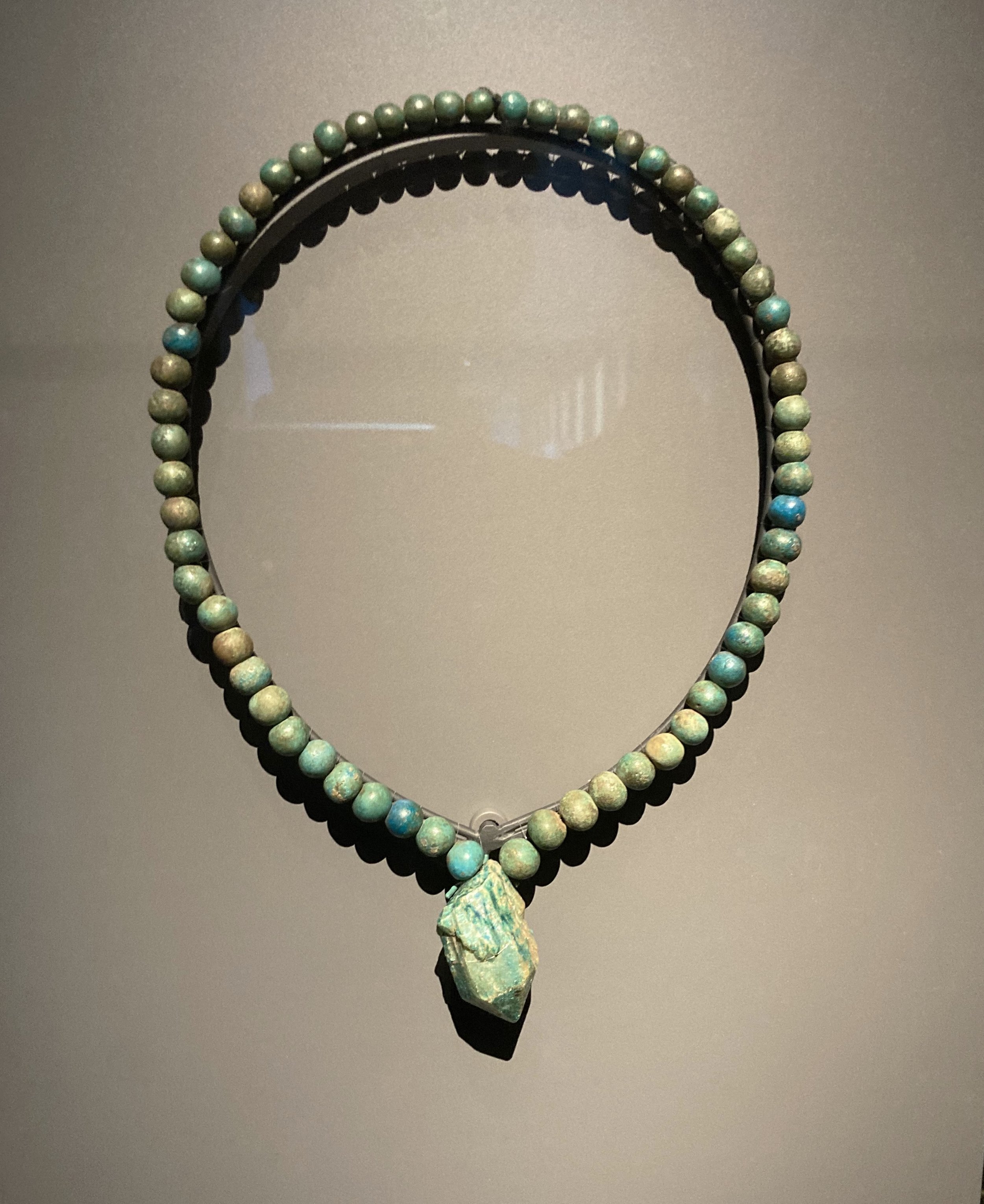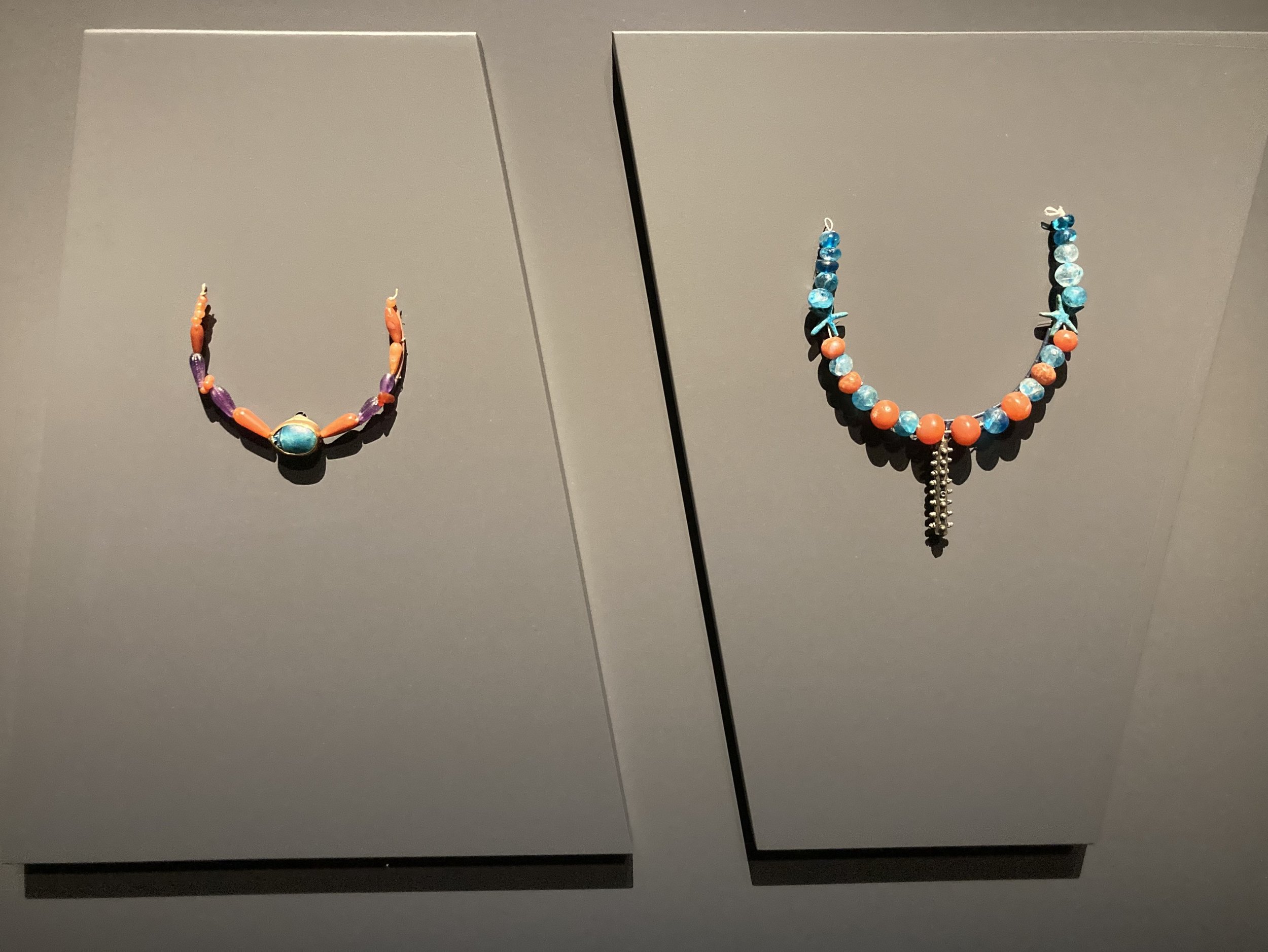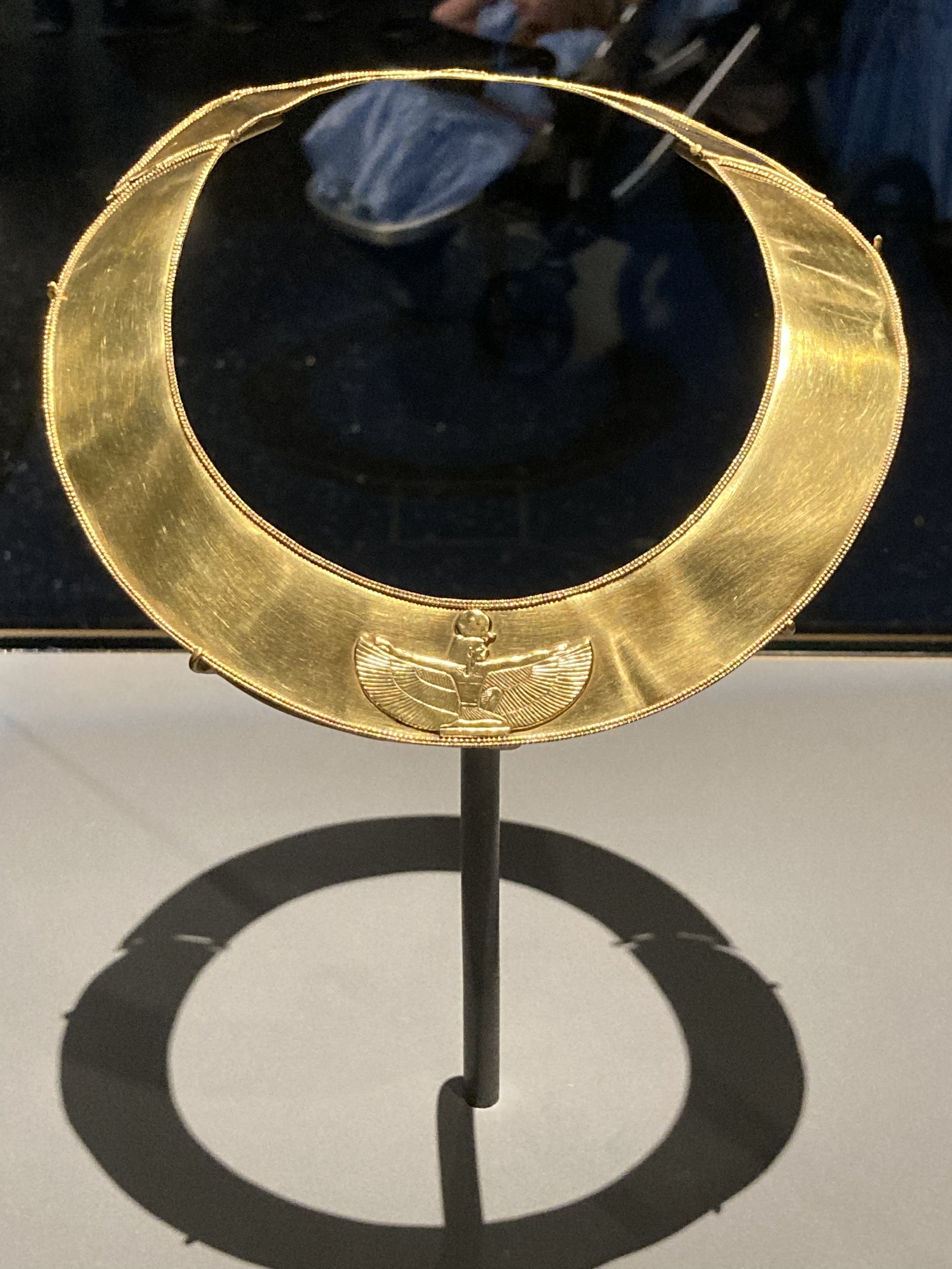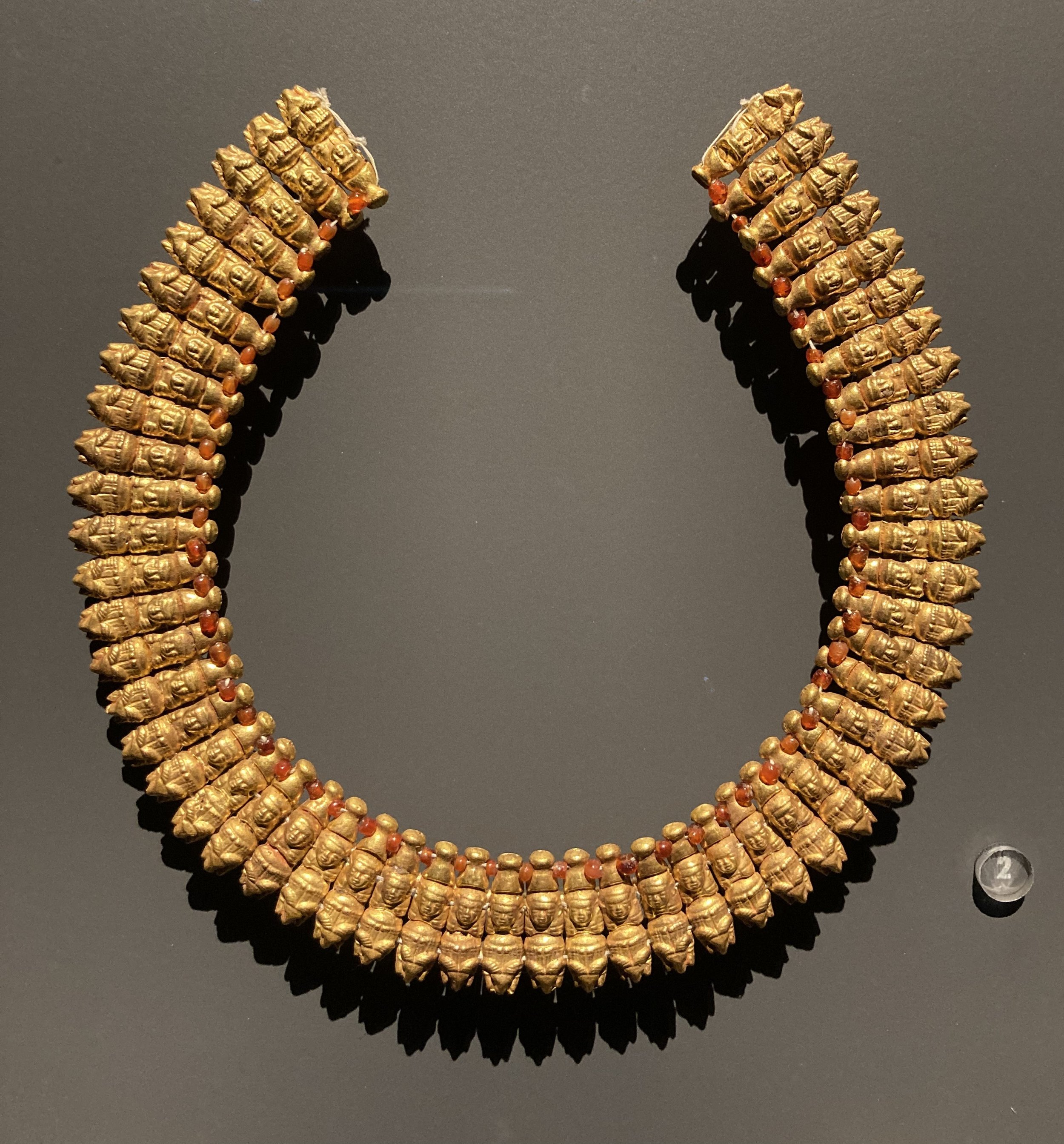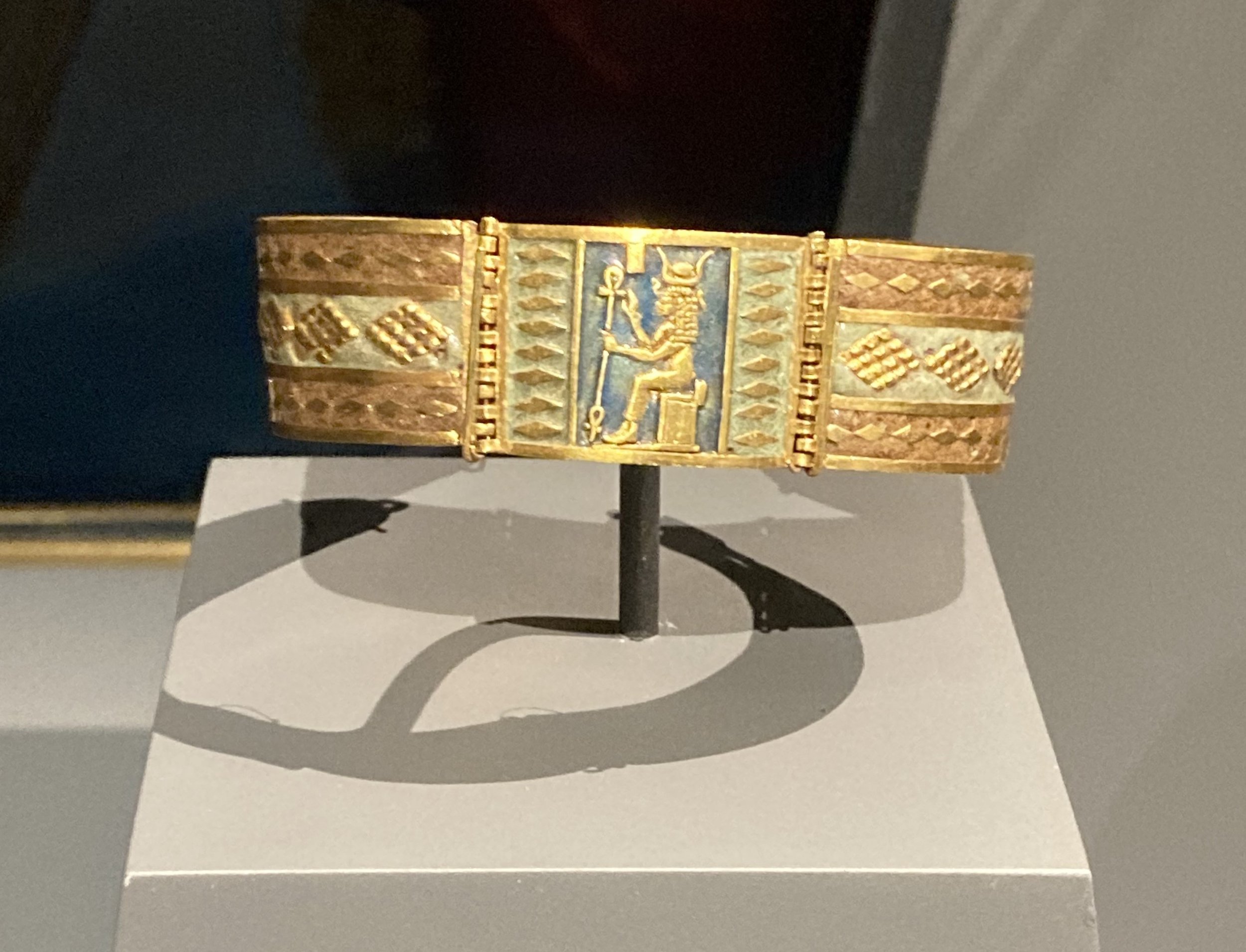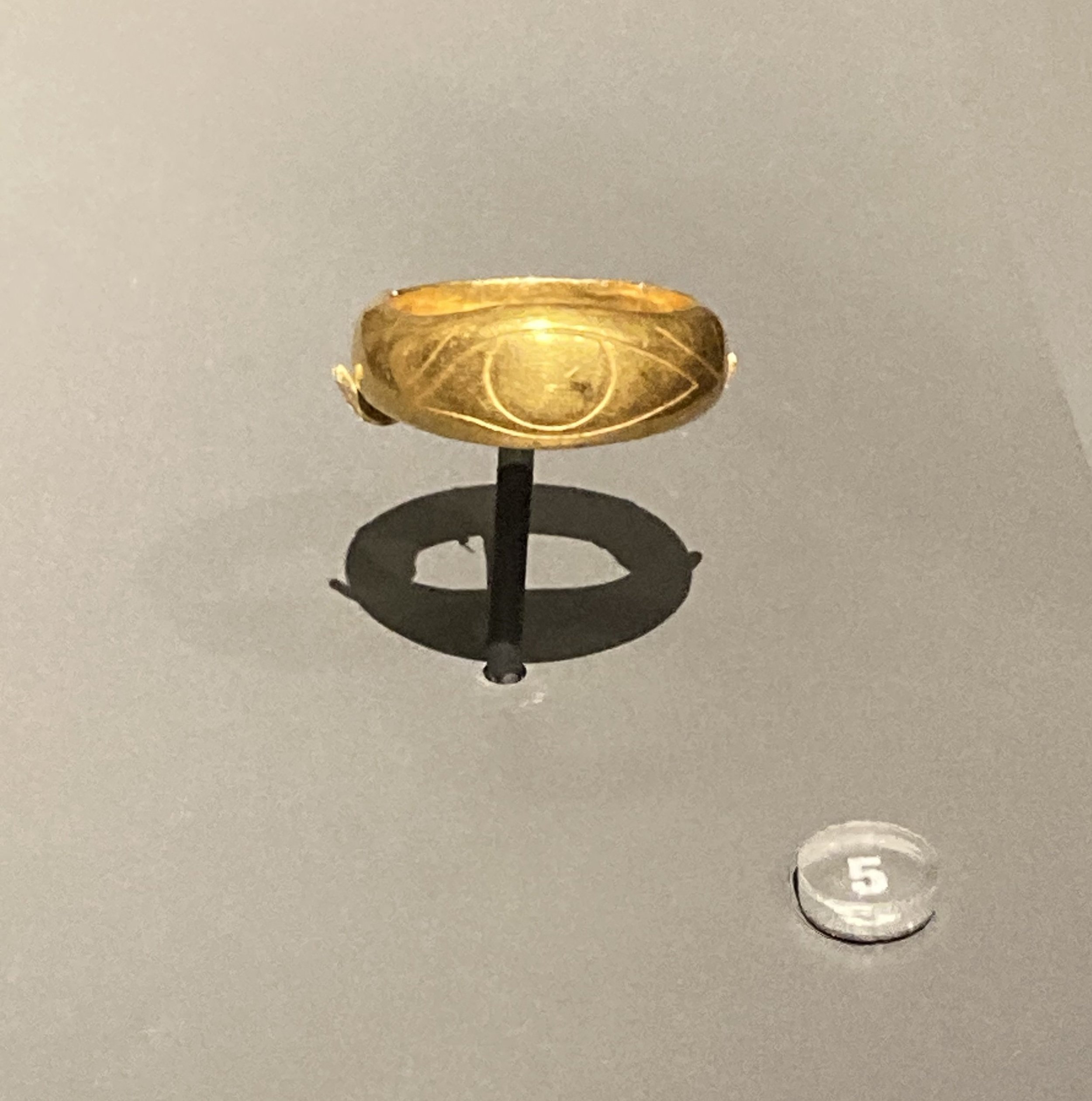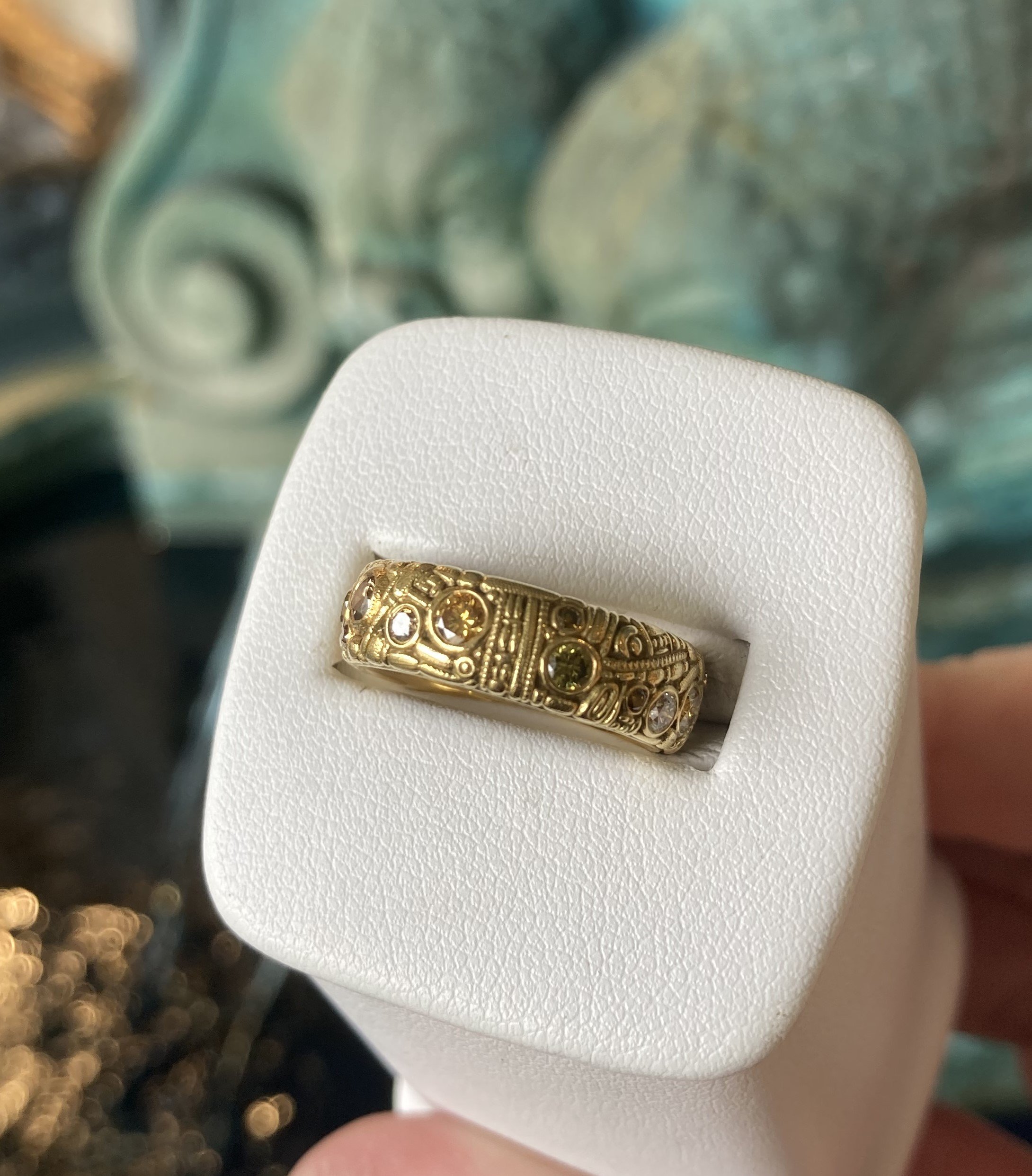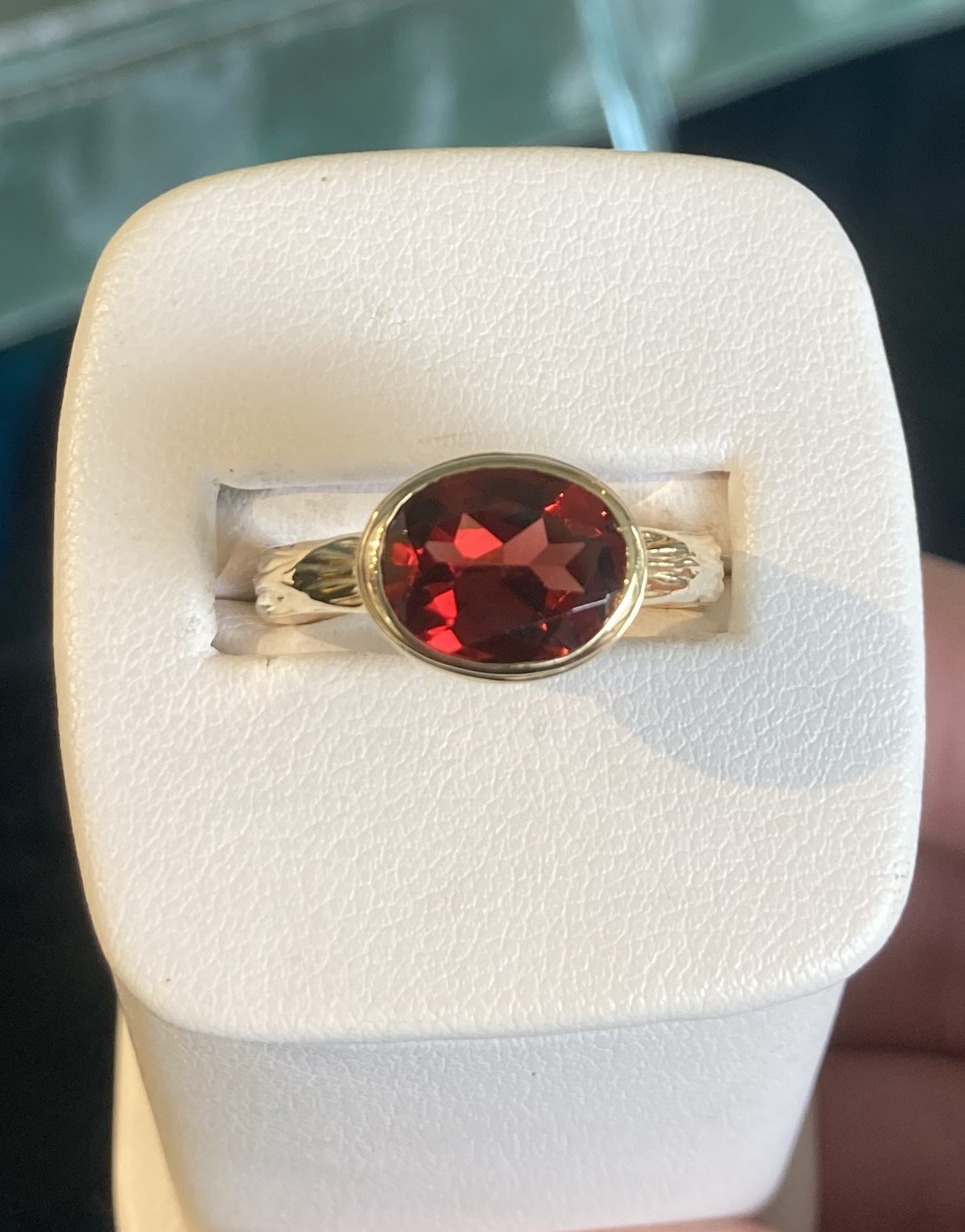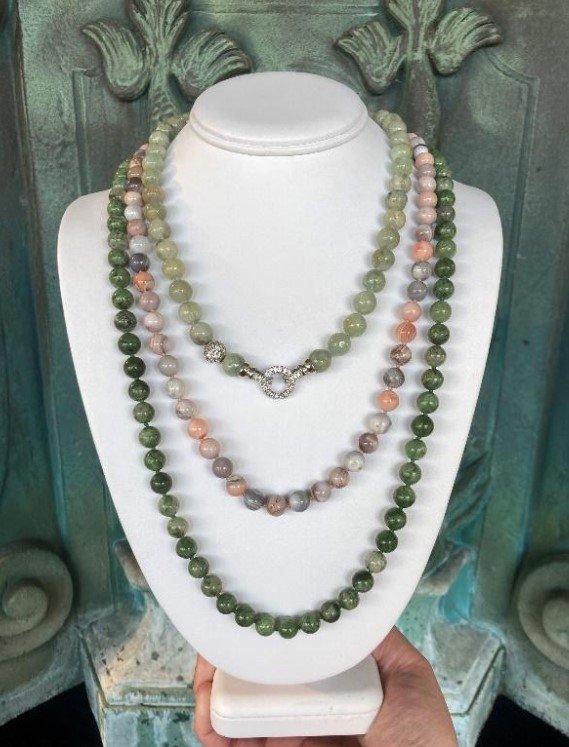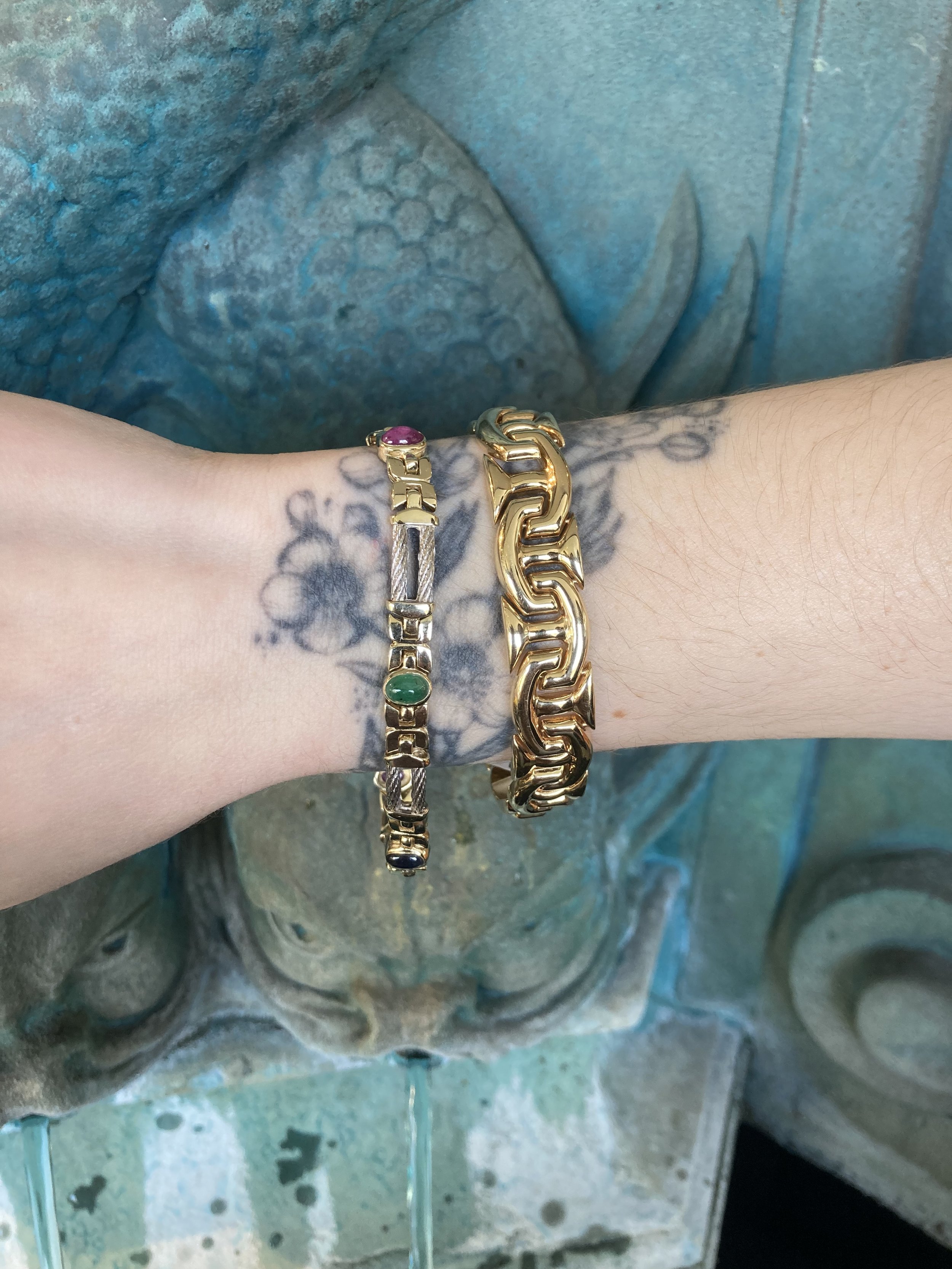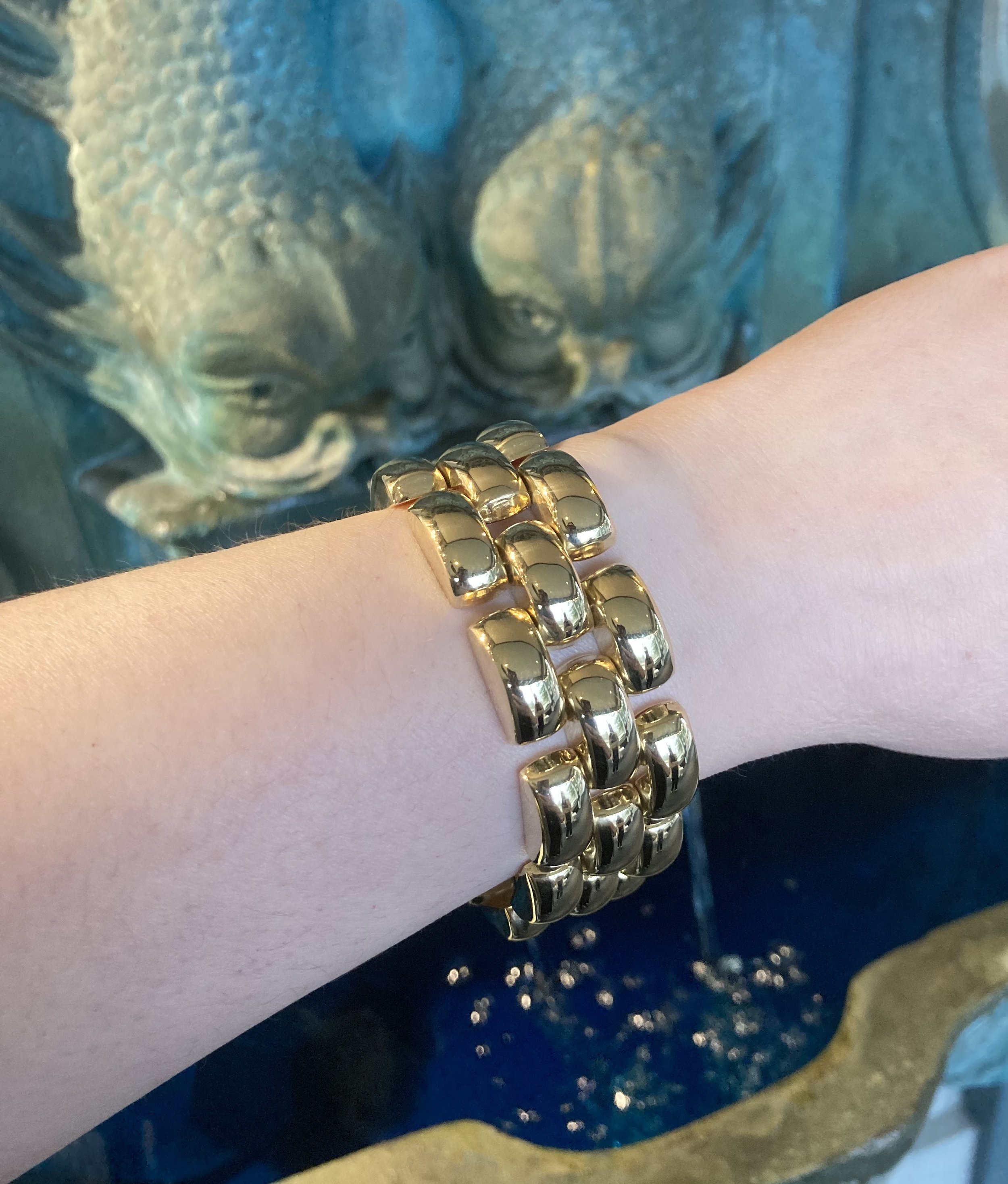Finding Inspiration in Ancient Nubia
On a recent trip to California, I had the unique pleasure of visiting the Getty Villa Museum. It truly is the one-of-a-kind destination it promises to be. This sprawling villa is a painstaking recreation of a Roman country house. Surrounding it are idyllic grounds filled with sculptures, perfectly manicured topiaries, and a refreshing breeze from the nearby Pacific Ocean.
Exterior views of the Getty Villa
The museum itself houses an impressive collection of ancient Greek and Roman art. As I strolled through, I quickly lost myself among the splendor of these treasures and the beautiful surroundings. That was until I came across an exhibit titled, Nubia: Jewels of Ancient Sudan. As a lover of jewelry, I immediately snapped to attention and my pulse raced with excitement! When I entered the gallery, my heart beat even faster as my eyes were flooded with a vast collection of jewelry and artifacts showcasing the highest craftsmanship of ancient Nubian society.
Nubia is located along the Nile River in present-day southern Egypt and northern Sudan. Beginning around 2400 BC, it was home to a powerful series of kingdoms for nearly 3,000 years. Nubia is considered one of the earliest cradles of civilization. The region was rich in geological resources like gold, copper, and gemstones. Nubian society thrived as these natural riches allowed them to become a gateway for trade among other civilizations in areas like Egypt and the Mediterranean. This open exchange allowed ancient Nubians to flourish in a multitude of ways, including political and religious innovations and artistic expression. This prosperity also took form in the accumulation of great wealth. As a result, personal adornments became a means of expression and a display of power among Nubian society.
This expression of wealth and stature through jewelry is a central theme throughout the Getty museum’s exhibit. The jewelry on display was curated among artifacts recovered from royal and aristocratic burial sites in Sudan. These archaeological treasures were uncovered during a joint expedition led by Harvard University and Boston Museum of Fine Arts between 1913 and 1932. The exhibit thoughtfully opens our eyes to an ancient world full of sophisticated designs, advanced goldsmithing techniques, and a vibrant use of color through local gems like quartz, carnelian, ivory, and mica. Some of the most outstanding pieces show the technique Nubian artisans mastered in glazing clear quartz. Nubians adopted faience, an ancient type of ceramic from neighboring Egypt, to glaze their quartz beads. They particularly mastered blue glazing techniques as evidenced by these necklaces and this magnificent, beaded belt with a large quartz pendant:
Other standout pieces include those worn by Nubian royal women. Starting in the late second century BC, a series of queens independently ruled what was known as the Kingdom of Kush. They are depicted in carvings on the walls of royal pyramid tombs adorned in ornate pieces such as those displayed below:
Viewing the exhibit, I was awe struck by the elegance and modernity of this jewelry. Ancient Nubians have clearly left an indelible mark on modern-day jewelry design and metalsmithing. I could see any of the pieces on display being worn today with great pride, relevance, and excitement. Since returning from my trip, I have found myself looking at jewelry with a newfound appreciation for this ancient society’s techniques and innovations. Here at Forsythe Jewelers I see all around me the echoes of Nubian design and technique, like these carved rings featuring colored diamonds (left) and a superb oval-cut garnet (right):
Or these beaded necklaces drawing inspiration from the raw beauty of colored gemstones:
Left: Double-strand necklace of brown pearls graduating into green stones. Right: Top necklace features green agates, followed by porcelain jasper in soft pink tones, and deep greens shine through in Brazilian jade
Finally, these yellow gold bracelets and necklaces from our collection are fit for Nubian royalty:
To read more on the Getty Villa Museum and this exhibition, I highly recommend visiting their website at: Nubia: Jewels of Ancient Sudan (getty.edu) I hope you, too, will be inspired by the splendor of ancient Nubia and stop in to see us anytime you want to channel your inner Nubian queen through jewelry!



